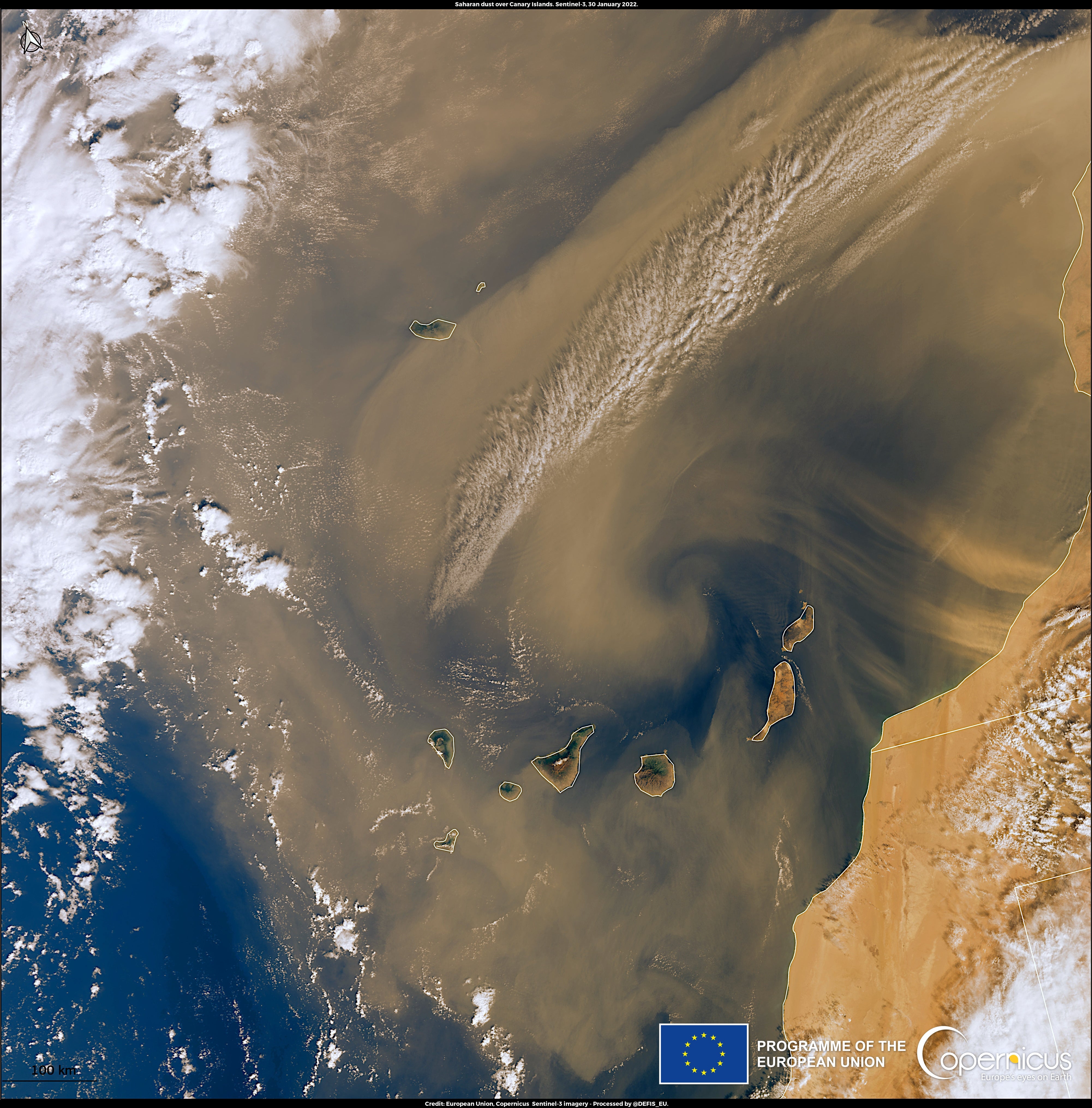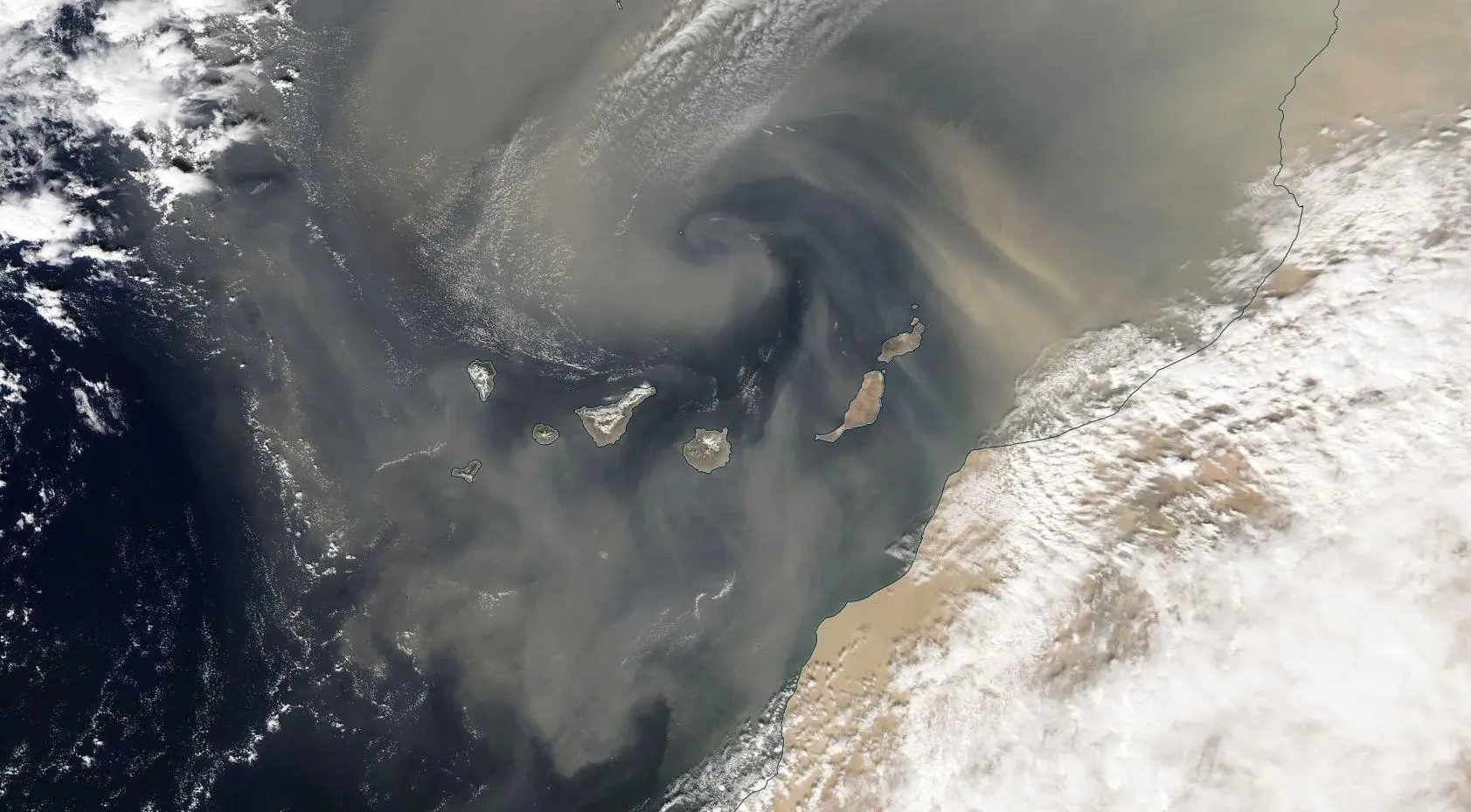Huge Saharan dust cloud over Atlantic Ocean pictured from space
The cloud of dust has triggered a public health warning in the Canary Islands and Portugal

This astonishing image shows a new Saharan dust storm moving over the west coast of Africa over to the Atlantic Ocean – the third such storm in less than two weeks.
The picture, taken by the Copernicus Sentinel-3 satellite on January 30, shows the vast cloud over Spain’s Canary Islands, as well as in Madeira in Portugal, which have been heavily affected by significant concentrations of dust in the air.
The Spanish National Meteorological Agency, AEMET, has issued a yellow alert and health authorities have advised people not to stay outdoors for extended periods of time.
The yellow notice will remain active throughout Monday until midnight tonight.
Two weeks ago a dust plume formed that extended 2,500 miles from the coast of Mauritania in Western Africa up to Ireland.

The US government agency National Oceanic and Atmospheric Administration (NOAA) tracks the movement of Saharan dust over the Atlantic.
It said the phenomenon is caused by the Saharan Air Layer, a mass of dry air that forms over the desert throughout the year.
The dust is known for travelling west over the Atlantic but sometimes travels north towards Europe.
NASA scientists, using a combination of satellite data and computer models, predict that Africa’s annual dust plumes will actually shrink to a 20,000-year minimum over the next century as a result of climate change and ocean warming.
The Sahara Desert is 3,600,000 square miles of arid land stretched across the northern half of Africa, coming in just slightly smaller in size than the continental United States.
More than 60 million tonnes of its nutrient-laden mineral dust are lifted into the atmosphere each year, creating a massive layer of hot, dusty air that winds carry across the Atlantic to deliver those nutrients to the ocean and vegetation in South America and the Caribbean.
Join our commenting forum
Join thought-provoking conversations, follow other Independent readers and see their replies
Comments